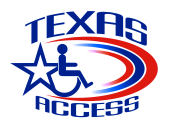European Web Accessibility Laws and Policies establish several products and services that must be accessible in Europe.
As a matter of fact, According to the EU’s statistics office, Eurostat in 2011, about 80 million in the EU have a form of disabilities. This means one in six Europeans has a form of disability, whether physical, mental, intellectual or sensory impairment and this figure is projected to increase by half to about 120 million people with disabilities by 2020 considering the rising elderly population.
Of the 80 million disabled Europeans, about 30 million people suffer from visual impairments, there are an estimated 25 million people suffering from dyslexia, about 5 million with physical impairments, and 3.3 million people with autism. The lack of accessibility contributes to the exclusion or partial exclusion of these millions of people from using basic products and services. This necessitated the importance of an all-inclusive effort to address accessibility issues across the European Union, hence, the European Accessibility Laws.
The EU has two web accessibility laws
- EU Web Accessibility Directive or Web and Mobile Accessibility Directive
- European Accessibility Act
EN 301 549 – European Union Web Accessibility Directive
The EU Web Accessibility Directive [Directive (EU) 2016/2102}, was adopted on 22 December 2016 and represents the first-ever European standard for digital accessibility. EN 301 549 V1.1.2 is a functional accessibility requirement that was developed by the three European Standard Organizations- the European Committee for Standardization (CEN), the European Committee for Electrotechnical Standardization (CENELEC), and the European Telecommunications Standards Institute (ETSI) as a harmonized European standard.
The Directive aims to ensure all Europeans can take a full and active part in the digital economy and society by authorizing all public sectors of EU member states to make sure their websites and mobile applications are accessible to people with disabilities and meet common accessibility standards.
Just like Section 508 in the U.S.A., EN 301 549 laid out the accessibility requirements for ICT products and services for all EU member states to implement, enforce, and maintain a uniform set of accessibility standards so as to provide unrestricted access to people experiencing any form of disabilities. This practice will ensure EU citizens will benefit from increased access to public sector services through websites, mobile applications, and electronic devices and will receive services and information like everyone else.
What? and Who Does EN 301 549 Cover?
The EU Web Accessibility Directive covers:
- Websites and mobile applications
- Electronic documents
- Software
- Electronic devices
- Web content
Of public sector bodies, with a limited number of exceptions (e.g. broadcasters, live streaming). EN 301 549 Directives affect all EU member states’ federal, state, regional, and local agencies and vendors, bodies governed by public law and financed via public contract and associations formed by them that has the purpose of meeting needs of general interest, contractors and partners of those agencies operating within and outside the European Union. This simply means public administrations, hospitals, courts, and other public sector bodies of EU member states must provide accessible websites, mobile applications, documents, and digital content on the basis of common accessibility requirements.
Quick facts about EN 301 549
What It Covers: Electronic devices, websites, mobile applications, and digital content of public sector bodies, etc.
Who Must Comply: All EU member states’ federal, state, regional, and local agencies and vendors, bodies governed by public law and financed via public contract and associations formed by public law for the purpose of meeting needs of general interest, and contractors and partners of those agencies.
Upcoming Deadline: Public sector websites published before September 23, 2018, must comply by September 23, 2020, and mobile applications by June 23, 2021.
Failure to comply with the Directive may result in fines or other legal penalties, negative publicity, and quite possibly consumer backlash.
EN 301 549 and WCAG 2.0/WCAG 2.1 Level AA
The EU Web Accessibility Directive refers to specific standards to make websites and mobile apps more accessible, that is, the WCAG standard. Unlike the prior version of EN 301 549 that included WCAG 2.0 as an electronic attachment, the EU Web Accessibility Directive has been updated to adopt the four principles of the World Wide Web Consortium (W3C’s) Web Content Accessibility Guidelines (WCAG) 2.1, requiring that public sector organizations across the EU take steps to ensure their websites and mobile applications and devices are perceivable, operable, understandable, and robust. The directive references EN 301 549 which in turn references WCAG 2.1 Level AA standards as a set of functional accessibility requirements for information and communications technology (ICT) products and services to comply with the law.
In other words, to be compliant with EN 301 549, EU member states need to abide by WCAG 2.1 Level AA standards.
EN 301 549 Compliance
Apart from mandating website and mobile app content be made accessible to everyone by establishing uniform rules for online accessibility in the EU as a bare minimum for compliance, the EU Web Accessibility Directive demands these websites and mobile applications have an accessibility statement on their level of compliance, indicating any content that is not accessible and should include, where appropriate, the accessible alternatives provided for. It also calls for a feedback mechanism that the users can use to flag accessibility issues or to ask for the information contained in non-accessible content. EN 301 549 expects periodic monitoring of conformity of public sector websites and apps with the standard by the Member States, and that they report on the results of the monitoring.
The Directive was originally passed in 2016, made effective September 23, 2018, and established the minimum timelines for compliance, monitoring, and enforcement, published by the European Commission:
- Public sector websites published after September 23, 2018: Deadline – September 23, 2019
- All public sector Websites published before September 23, 2018: Deadline- September 23, 2020
- All public sector mobile applications: Deadline – June 23, 2021
These monitoring reports have to be communicated by member states to the Commission and to be made public for the first time by 23 December 2021, and every three years thereafter. Failure to comply with the Directive may result in fines or other legal penalties, negative publicity, and quite possibly consumer backlash.
Although nations within the EU also have their own governing guidelines, e.g. Germany’s BITV 2.0. Even when they vary by country, the various web accessibility laws reference WCAG 2.0 as a basic standard for measuring accessibility.
European Accessibility Act
Following UN recommendations, the United Nations Convention on the Rights of Persons with Disabilities (UNCRPD) recommendations, the European Accessibility Act [Directive (EU) 2019/882} is the EU’s significant step in the journey of making the EU more accessible for persons with disabilities. The Directive was first published as a proposal on December 2, 2015, and finally adopted in April 2019. It set new EU-wide minimum accessibility requirements for a limited range of products and services and ultimately aims to improve the functioning of the internal market for accessible products and services, by removing barriers created by divergent legislation in its Member States.
EAA will ensure people with disabilities have access to products, services, and information in the internal EU market, and businesses have easier cross-border trading through common accessibility rules across the European Union.
What? and Who Does the European Accessibility Act Cover?
Since the European Accessibility Act’s objective is to bolster the accessibility of products and services in the EU for people with disabilities, it covers a number of products and services across the public and private sectors that are deemed to be important to individuals with disabilities including:
- Computers, smartphones, laptops, tablets, and operating systems for those hardware systems
- Electronic communication services
- Payment terminals/ATMs
- Consumer terminal equipment used for electronic communication services (telephony services)
- Consumer terminal equipment used for accessing audiovisual media services (television broadcast)
- E-readers and E-books
- E-commerce
- Banking services
- Services related to air, bus, rail, and waterborne passenger transport
- Websites and mobile applications developed or made available by operators of passenger transport services
- Emergency communication with the single European emergency number 112.
In other words, the European Accessibility Act seeks to mend fragmented national laws and promote trade between members of the EU by mandating public and private sectors of the European Union member states to ensure everyone, including those with any form of disabilities, can access products and services.
The Directive harmonizes accessibility requirements for products and services across all the EU member states, in an effort to create a unified accessibility policy and promote inclusivity. It also laid out the obligations of economic operators such as manufacturers, importers, and service providers while also pointing out the harmonized standards and mode of the declaration of conformity. The EU States have three years to introduce the provision into their national laws and six years to apply them. That is, the Directive sets the deadlines for member states to pass the necessary implementation acts by 28 June 2022, and apply the various measures that the Accessibility Act contains by 28 June 2025 while the period of report and review is set by 28 June 2030, and every five years thereafter.
The EU Web Accessibility Laws and WCAG 2.0/2.1 Compliance
Given that the European Accessibility Act gave a complementary reference to existing EU legislation for accommodating people with disabilities- the EU Web Accessibility Directive (EN 301 549) for ICT-related products and services, it is important to note that the European Accessibility Act also makes use of the WCAG guidelines. Currently, EU states that have adopted and transposed the accessibility requirements to their regulations have it limited to government and public sector websites and are based on the WCAG 2.0/2.1 standard. On an individual member state level, however, requirements for public website accessibility are present in Austria, Denmark, France, Germany, Ireland, Italy, Lithuania, Netherlands, Portugal, Spain, and the United Kingdom. In general, there are no requirements for the accessibility of private-sector websites within EU member states except the United Kingdom but the two regulations will ensure organizations that work or do business with or provide products or services to the government provide reasonable access to whatever the company produces or services rendered.
Together, the EU Web Accessibility Directive and the European Accessibility Act aim to put an end to the fragmentation in the EU web accessibility market. The two laws will ensure European companies and organizations are now compelled to act towards ensuring their digital assets are accessible to everyone, including people with disabilities. The Europe-wide laws on public sector accessibility enable everyone to read, understand, and complete administrative procedures on public sector websites and mobile applications. This means web and online services/businesses must perform an accessibility audit of their website to identify where there are barriers for people with disabilities, provide accessibility statements on the website, and plan for remediation, necessary to meet the standards. In other words, they must use the WCAG 2.1 Level AA checklist to be easily perceivable, operable, and understandable, thereby greatly improving access to products in the market for over 80 million Europeans with disabilities.
Fancy the EU Web Accessibility Laws in a presentation? Follow it on our SlideShare.
The time to be compliant is now!







